Chris Dyson is challenged and inspired by a new book that plots multiple future trajectories for London
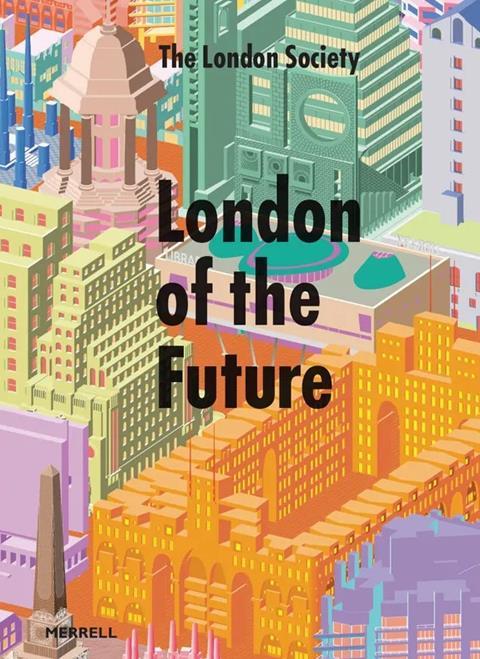
London of the Future was a book produced by The London Society in 1921 and edited by architect, Sir Aston Webb. A century on, the new edition is a long-anticipated sequel.
Today’s book follows the same format of a compilation of essays, though this time, thankfully, they are not exclusively by men. The Society’s Chair, Leanne Tritton introduces the many strands of thought by all the respected individuals in different fields that have contributed; they bring diverse perspectives, but all share a passion for the place.
Peter Murray’s typically erudite introduction neatly encapsulates London as the city of villages it has historically grown from – and will continue to be by virtue of its ownership. These villages are also beautifully captured in maps by Patrick Abercrombie and John Henry Forshaw. In discussing London’s open land, he also touches on the Thames beaches, considering them as a valuable, if unexpected, part of the city’s green spaces.
Some of the contributions are creative. Mark Stevenson assimilates hope with the imagined outcome of the kind of environmental policies we might like to see and writes from the vantage point of a healthier, more resilient future London – ‘The Sponge.’ Others, such as Tony Travers, extrapolate from data and past trends to try to predict what will happen next based on what has gone before.

The Art of Prophecy offers a word of warning from Hugh Pearman, the new Chair of the Twentieth Century Society, on faith in any kind of urban divination. His piece suggests we rethink the green belt, and perhaps revisit Peter Barber’s hundred-mile city as a new high-density, low-rise wave of buildings to grow from the countryside into the suburbs – proactive and thoughtful stuff.
Unlike Webb’s edition, today’s book has a greater ESG focus on social, economic and environmental factors. However, though architecture is a product of these forces and values, as architects, I do believe we should focus on the area where we can make the most difference – the buildings themselves. We must leave a legacy of quality, of buildings that future generations will still want to use and protect.
Another shift in the book’s emphasis is the role of London as a global city, in its population, trade and influences, and the potential impact of new technologies, such as AI, on the way we live and work. Kat Hanna writes well on City of London Futures. This is an area of which I am fond, having lived in the Barbican when I first arrived – it is wonderful to see how it is changing, how ancient financial and social institutions are showing willingness to explore new avenues of growth and progress, and finding new ways to tackle the issues we currently face.
The creative reuse of many of the capital’s buildings is now firmly at the heart of most architects’ workload, and nearly all new builds must calculate and evaluate the carbon spend. Gillian Darley writes on the future of heritage conservation – v2 – as “put simply, the future of London.” She urges the adaptation of surviving buildings, with the understanding that what takes their place may well become another tranche of heritage.
The idea that we might create architecture worthy of future protection brings to mind No. 1 Poultry, whose Grade II* listing was advocated for by its users, experts and neighbours – it was the youngest building in England to be listed at the time. As we strive for excellence, Laying Firm Foundations by Roma Agrawal emphasises the art of the possible through engineering advances.
Aside from buildings, when we look at the capital’s land, we’re at an interesting point in the redevelopment of its former brownfield and industrial sites, notably in the transformation of old railway yards: Kings Cross, Old Oak Common in the west, and the Goodsyard in the east. Kings Cross stands as a testament to the leadership of Roger Madelin and his Argent team to revitalise a vast expanse of Camden as a distinctive and remarkable urban space.
By contrast, Old Oak Common faces a somewhat uncertain trajectory, given its pivotal role as London’s endpoint of the HS2 line. It is balanced on the fulcrum, waiting to see which way government policy will tip – no doubt to be featured in next century’s London of the Future. On the other hand, the Goodsyard, long-awaited and eagerly anticipated, is now gaining momentum. Individual planning applications are emerging, promising a harmonious blend of housing, offices, open space and cultural amenities.
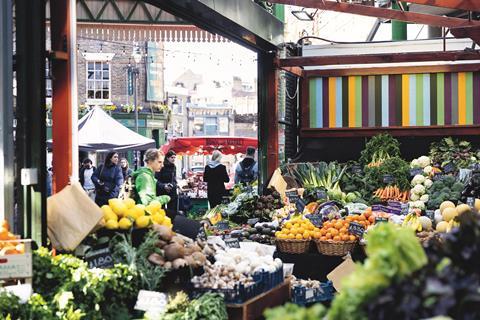
There is a wonderful chapter by Carolyn Steel, Future Food City, which I happened to read while in Tuscany, arguably the home of some of Europe’s greatest food and wine. She considers the “smorgasbord of potential food futures” that awaits London; whether it will remain a convivial city of markets and high street shops, or become laboratories in the sky, devoid of character and joy and arguably not as sustainable.
Since AD43, London has imported much of its food via the natural port, Londinium. Unusual goods such as olive oil, nuts, raisins, spices and later sugar, for example, helped define markets and places in the city. These international flavours remain. Steel uses John Ogilby’s 1676 map of London to illustrate how markets became established along the river and its tributaries: Smithfield, currently undergoing great change, Newgate, Cheapside (‘ceap’ meaning to barter), Poultry, Cornhill, Leadenhall, Aldgate… and along the river, Queenhithe, Billingsgate.
Highlighting the 1720 trade in sugar, she quotes Daniel Defoe: “It is not the kingdom which makes London rich, but London that makes the rest of the kingdom rich… The country send up their corn, their malt, cattle, fish etc… and London sends back spice, sugar, wine, drugs, cotton, linen, tobacco, and all other necessities to the country.”
Steel also looks at food’s healing power, “as people eat, value and take pleasure in food.” This applies at an urban as much as an individual level – new places and buildings will be created from this desire.
A theme of many of the pieces is our collective responsibility, and giving back to the city. As Grafton Architects put it, “we must have a value system that’s generous to other human beings, both within our immediate circles and at a global level. We have to realise that we are sharing the earth with eight billion neighbours and the challenges that brings.’’ More than ever, we are living cheek-by-jowl in this city as it stretches up and out, vertically and horizontally.
The challenges of the future are to create vital, living communities, with real homes; villages that people want to be a part of. This means welcoming diversity, finding space for people displaced as a consequence of the climate emergency and wars, eradicating homelessness, reinvigorating our high streets and old factories – these are all ways forward.
Claire Bennie wraps it up and starts again with the future of London’s housing. She cites vPPR’s mews in Croydon and the Hoxton Press Buildings by David Chipperfield and Karakusevic Carson Architects, considering how car-dependent homes may lose their value, and the untapped potential of London’s spare rooms. Interesting to consider how changes in inheritance tax rules might affect this.
Smith Mordak, Chief Executive of the UK Green Building Council makes a strong case for higher capital investment in quality housing, citing the example of Exeter council’s decision to target Passivhaus standards, which has reaped longer-term benefits in skills, energy reduction and costs for residents.
Like the first edition, this book will become a time capsule of the preoccupations of an era, as we too become history. As a studio, Chris Dyson Architects is often known for our work with heritage buildings, with finding new ways to engage with the past.
For us, that doesn’t mean conservation at all costs – the solutions can be bold or unexpected – but engaging thoughtfully and critically with what those original architects were trying to achieve. In a sense, the same is true of this book, which makes Webb’s original exercise current again: the lens of this new edition provokes fresh interest in those old essays and gives them new meaning.
The book is a reminder that we are creating the city’s legacy for future generations – as architects, are we serving their interests? Personally, I am optimistic about the future of London. It has always seen change, and though it is not always a place for the faint hearted, it will always be a place of opportunities for the brave and innovative.
The word Resurgam, written and illustrated by a blazing phoenix on the south transept of St Paul’s, seems more relevant now than ever.










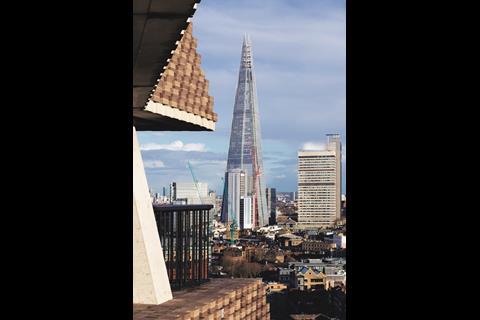
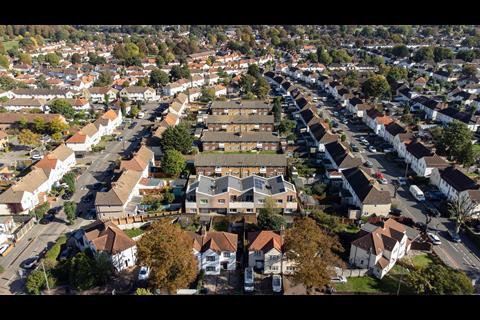
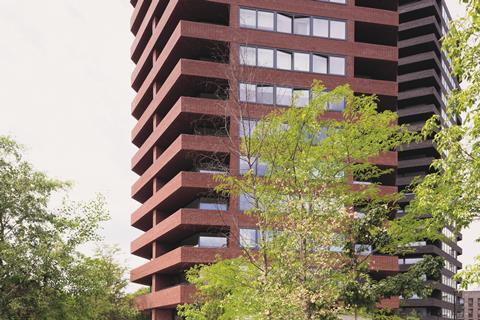







No comments yet